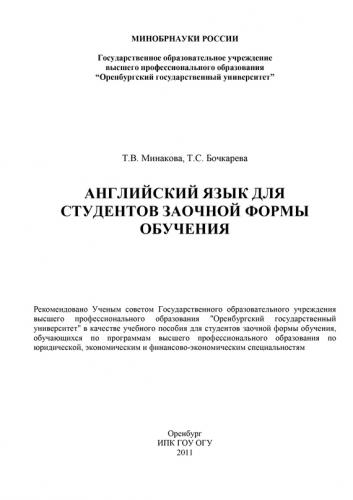Marketing operations include product planning, buying, storage, pricing, promotion, selling, credit, traffic and marketing research.
The ability to recognize early trends is very important. Producers must know why, where, for what purpose the consumers buy. Market research helps the producer to predict what the people will want. And through advertising he attempts to influence the consumer to buy.
Marketing operations are very expensive. They take up more than half of the consumer's dollar. The trend in the USA has been to high mass consumption. The construction of good shopping centers has made goods available to consumers. It provided a wide range of merchandise and plenty of parking facilities.
Text B. The Four “Ps”
1 There are many possible ways to satisfy the needs of target customers. A product can have many different features and quality levels. Service levels can be adjusted. The package can be of various sizes, colors, or materials. The brand name and warranty can be changed. Various advertising media – newspapers, magazines, radio, television, billboards – may be used. A company's own sales force or other sales specialists can be used. Different prices can be charged. Price discounts may be given and so on.
2 With so many possible variables, the question is: is there any way to help organize all these decisions and simplify the selection of marketing mixes? And the answer is: yes.
It is useful to reduce all the variables in the marketing mix to four basic ones:
Product. Promotion. Place. Price.
It helps to think of the four major parts of a marketing mix as the four "Ps".
3 Exhibit 1 emphasizes their relationship and their common focus on the customer – "С".
The customer is not part of the marketing mix. The customer should be the target of all marketing efforts. The customer is placed in the center of the diagram to show this. The C stands for some specific customers – the target market.
4 The Product area is concerned with developing the "right" product for the target market. This offering may involve a physical good, a service or a blend of both.
5Place is concerned with getting the "right" product to the target market's Place. A product isn't much good to a customer if it isn't available when and where it's wanted.
6 The third P – Promotion – is concerned with telling the target market about the "right" product. Promotion includes personal selling, mass selling and sales promotion.
7 In addition to developing the right Product, Place and Promotion marketing managers must also decide the right Price after estimating expected customer reaction to possible prices. All four "P's" are needed in a marketing mix. In fact, they should all be tied together. They all are equally important.
Text C. Marketing Strategy Planning
Marketing strategy planning means finding attractive opportunities and developing profitable marketing strategies.
A marketing strategy specifies a target market and a related marketing mix. It is a "big picture" of what a firm will do in some market. Two interrelated parts are needed:
1 A target market – a fairly homogeneous (similar) group of customers to whom a company wishes to appeal.
2A marketing mix – the controllable variables the company puts together to satisfy this target group.
The importance of target customers in this process can be seen in Exhibit 2 where the customer – the "c" – is at the center of the diagram. The customer is surrounded by the controllable variables that we call the "marketing mix". A typical marketing mix includes some product, offered at a price, with some promotion to tell potential customers about the product, and a way to reach the customer's place.
Note that a marketing strategy specifies some particular target customers. This approach is called "target marketing" to distinguish it from "mass marketing". Target marketing says that a marketing mix is tailored to fit some specific target customers. In contrast, mass marketing means trying to sell to "everyone".
2.2.3.3 Задание 3. Ответьте на вопросы по текстам А, В, С
1 What is marketing?
2 Does marketing play a big part in economic growth and development?
3 What operations does marketing include?
4 Are marketing operations expensive?
5 The marketing concept is a very important idea, isn’t it?
6 Which basic ideas are included in the definition of the marketing concept?
7 There are many ways to satisfy the needs of target customers, aren’t there?
8 What are the four basic variables in the marketing mix? 9 What is marketing strategy planning?
10 What two aspects are important for specifying a market strategy?
11 What control lable variables are necessary in the process of marketing strategy planning?
12 What is the difference between target marketing and mass marketing approaches?
2.2.4 Тексты для студентов специальностей «Экономика и управление на предприятии», «Менеджмент организации», «Государственное и муниципальное управление», «Управление персоналом»
2.2.4.1 Задание 1. Прочитайте и запомните следующие слова и словосочетания:
owner – собственник, владелец;
operator – владелец предприятия;
franchise – франшиза;
distribute goods – распространять (распределять) товары;
sell smth at retail – продавать в розницу;
management consulting – консалтинг по менеджменту;
preserve competition – сохранить конкуренцию;
prevent monopolistic control – предотвратить монополистический контроль;
benefits of competition – преимущества конкуренции;
incentive – стимул, побудительный мотив;
procurement assistance – материально-техническая помощь;
gross national product – валовой национальный продукт;
create new jobs – создавать новые рабочие места;
supply – снабжать, поставлять;
ownership – собственность;
retailing – розничная торговля;
wholesaling – оптовая
